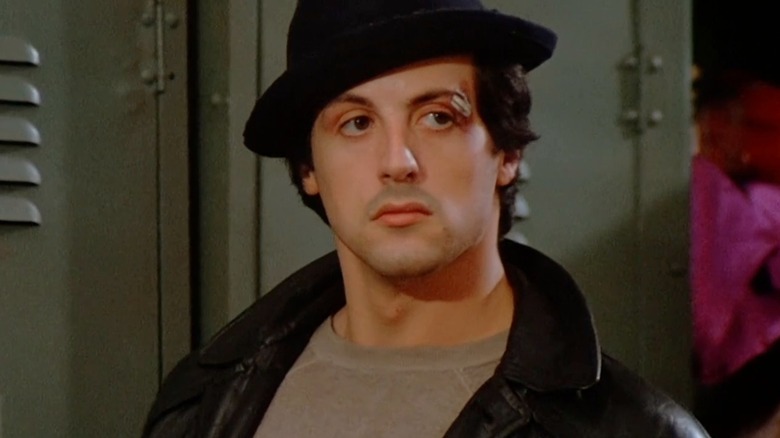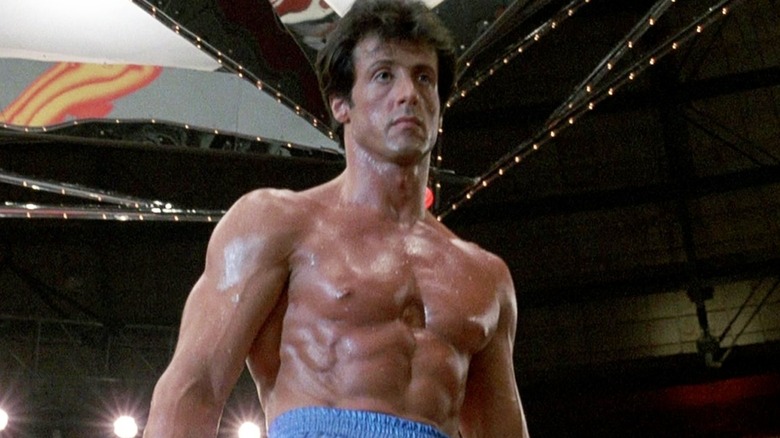The Way Rocky's Body Changes Throughout The Movies Is More Crucial Than You Think
"Rocky" is the simple tale of Rocky Balboa (Sylvester Stallone), who aspires to make something of himself by conquering the world of boxing. His efforts eventually bring him to a fight with seasoned veteran and world champion, Apollo Creed (Carl Weathers), which changes his life forever. In the blink of an eye, he goes from a scrappy amateur to a globally recognized sensation, with future "Rocky" films leaning heavily into his newfound fame and fortune. Eventually, though, his age and physical condition present him with no choice but to leave the sweet science behind, going out with one last fight that requires him to train harder than ever before.
Not only is this story told through dialogue and Rocky's actions, but his physical appearance chronicles it as well. In the first two films, he's fit but not overly chiseled, making it clear that he's working with what he has and doesn't have a state-of-the-art gym and dietary plan. This changes in "Rocky III" and "Rocky IV," where he has vast wealth and takes on a more cut physique with world-class equipment, a strong diet, and a public persona to uphold. "Rocky V" and "Rocky Balboa" still depict him as appearing healthy, but it is made clear in both films that his age is catching up to him. He can't train the same way or fight at the same level he did decades prior, but down deep, the Rocky of old is still there.
The character's story is one of highs, lows, and change, as reflected by his physical condition throughout the "Rocky" movies. His appearance is also indicative of changing men's health and beauty standards across decades.
Rocky is a reflection of changing men's beauty standards
Rocky's physical transformation charts with his rags to riches to retirement story in addition to pointing to real-world change. Especially from the '70s to the '80s, beauty standards for men changed drastically. In the former decade, as seen in "Rocky" and "Rocky II," the desired body shape was muscular but not too vascular and lean. However, in the decade and two films, "Rocky III" and "Rocky IV," that followed, this perception changed drastically. Thus, Rocky and Sylvester Stallone adapted with the times.
In those two films, Rocky goes full-on '80s action hero, with incredibly defined muscles and virtually nonexistent bodyfat. This was the style of the time, with the likes of Arnold Schwarzenegger and Chuck Norris doing the same as they led action franchises of their own. In some form or fashion, this trend has stuck around long past "Rocky V" and "Rocky Balboa," with modern properties centering on characters with such appearances. Look no further than the "Creed" saga — a "Rocky" sequel film series launched in 2015 focused on Apollo Creed's son, Adonis (Michael B. Jordan) — which has required the strict maintenance of Jordan's already ripped Hollywood physique.
Sylvester Stallone undeniably put in the work to tell the story of Rocky Balboa on the big screen, both in front of the camera and in the gym. Little did he realize way back when just how influential his narratively and societally relevant body transformation would become.

